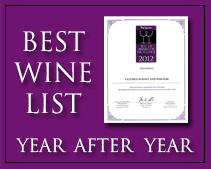Yellow River
Created by chinatravel
The Yellow River Yellow River Basin is the birthplace of Chinas culture. The trace of human beings had existed there since hundreds of thousands of years ago. The relics of Neolithic Age were found all around the river. Moreover, it has been regarded as the center for politics, economy as well as culture for a long period of time after the class society; therefore, it is called the cradle of Chinese nation. As early as the Old Stone Age (also called Paleolithic Age), humans had some activities there.
Yellow River Basin is the birthplace of China’s culture. The trace of human beings had existed there since hundreds of thousands of years ago. The relics of Neolithic Age were found all around the river. Moreover, it has been regarded as the center for politics, economy as well as culture for a long period of time after the class society; therefore, it is called the cradle of Chinese nation.
As early as the Old Stone Age (also called Paleolithic Age), humans had some activities there. In 1963, “Lantian Ape Man” including the skulls, teeth and jawbones was discovered in Lantian, Shaanxi Province. It was proved by archaeologists to be of a history of 800,000 years. The “Dingcun Man”, which was found in Xian gfen of Shanxi Province, has had a history of 200,000 years. There are also some examples, such as “Hetao Man” in Hetao District of the Yellow River Basin and cave site found in Anyang, Henan Province. They both have a history of over 50,000 years. In this long river of history, both the body of humans and the culture of the Old Stone Age were developed. They came to know how to make a fire and how to make rough stone and bone implements. Furthermore, they had mastered the skills of drilling, grinding, hunting and fishing. The representative people of the period were probably legendary Suiren Family and Chao Family.
The population at the Yellow River Basin saw a rapid increase during the New Stone Age, when the production ability and culture were also developed dramatically. In 1920, a great amount of stone and bone implements and potteries were excavated at Mianchi, Henan Province. Among them, there were stone axe, knife, pestle, hoe, and spinning wheel, bone needle used for sewing, along with colored pottery. They were known as “Yangshao Culture”, which was proved to have lasted for more than thousands of years. Its relics were found at Qinghai, Gansu, Shaanxi, Shanxi and Henan Provinces.
The representation of this period is the ruins of Banpo Village in Xi’an City. At that time, people of the village started to plant cereal crop and raise livestock. They even knew how to spin and weave. What also came into being were comparatively big thatched cottages built with mud and wood, and caves for the storage of cereals. Constructed around the residential areas were channels with the depth and width of 5 to 6 miles, and the length of over 300 miles, resulting in the change of the residential condition of people. The skills of making potteries had been rather developed then. The potteries unearthed included all kinds of red potteries and colored potteries with lifelike animal patterns on them. They well reflected the artistic talent of the primeval people. Some carved symbols on the colored potteries were likely to be the original characters of Chinese.
During later period of the New Stone Age, significant transformation took place at the Yellow River Basin. At that time, the tools of production were improved, while matriarchy was replaced by patriarchy, and private ownership came into being. The social condition of this period was primarily revealed by the excavation at Shandong Province in 1959. Later, archaeologists found the trace of Dawenkou Culture successively at the south and north of the Yellow River in Shandong Province. It came into being approximately at the middle age of the Yangshao Culture and ended later than it. Judging from the excavation, the production tools then contained axe punched, flat and thin stone spade, and short-handled pick made of buckhorn.
The stone axe, spade, adze, and chisel were all made of stone with extremely high hardness, and some by opal with a 11-degree hardness. At some unearthed graves, a number of jade adornments, drinking vessels and delicate ivory carvings were found. What’s most attractive in the excavation was a malachite green bone chisel, which was proved to contain plenty of copper, revealing that people of that time had known how to make use of copper. In addition, it was discovered that there were many joint tombs where one man and one woman were buried together. The graves were quite different in the scale and the amount of the burial articles, which was rare in the graves at the Yangshao Period. It meant that it had transformed to the patriarchy, and the gap between the rich and the poor had become even wider.
About 4,000 years ago, Primitive Society came to an end. Qi, the son of Emperor Yu of the Xia Dynasty (2070 BC ~ 1600 BC), broke the rule of voluntary abdication. Instead, he took over the crown from Emperor Yu directly and thus established a slavery country. According to some ancient documents, the Xia Dynasty lasted for 4 or 5 hundred years. People then lived at the middle and lower reaches of the Yellow River, where there were mainly Henan, Shanxi and Shandong Provinces. Although slavery destroyed the equal relationship built in the primitive society, it helped to promote the development of agriculture, handicraft industry as well as science. Judging from the excavations of Yanshi County in Henan Province and Tangshan City in Hebei Province, bronze wares had come out no later than the late Xia Dynasty. The early Xia Dynasty was probably the era of red bronze. With the emergence of bronze smelting industry, the second great division of labor took place. It meant that handicraft industry and agriculture were separated from each other, symbolizing the coming of a new level of ancient culture.
About 3,500 years ago, the Shang Dynasty (1600 BC ~ 1046 BC), the second dynasty in China’s history, was established by both banks of a stretch of the Yellow River. Henan Province was the center of this stretch. It was a highly developed ethnic slaver state. Tens of thousands of slaves worked hard, boosting the further development of agriculture and handicraft. Meanwhile, people then made higher achievement in culture, art and natural science.
At the Spring and Autumn Warring States Period (770 BC ~ 221 BC), which was after the Western Zhou Dynasty (1046 BC ~ 771 BC), Yellow River Basin experienced the transition of society, namely from slavery to feudalism. New production relation stimulated the development of productivity. Iron smelting became a new but essential part of handicraft industry. Iron production tools were used in principalities one after another, resulting in the even further development of agriculture. With the development of production, the old production relation in slavery was gradually replaced by the new relation in feudalism. Economy boomed in cities including Xianyang of Qin state, Dalian g of Wei state, Handan of Zhao state as well as Linzi of Qi state. They were all known far and wide, and Linzi had become a giant city with a population of more than 200,000. Simultaneously, thought and literature became unprecedentedly dynamic. Schools of thoughts representing the benefits of different classes debated fiercely with each other. They built private schools and published books, emerging the situation of letting a hundred schools of thought contend in the ancient intellectual history. Eventually, abundant works of literature were passed down.
From Qin (221 BC ~ 207 BC) to Northern Song Dynasties (960 AD ~ 1127 AD), the Yellow River Basin was still the location of the capitals and the center of politics, economy as well as culture. People, who lived by the river, created abundant and magnificent culture with their own hard work and brilliant ability. In the Han Dynasty (202 BC ~220 AD), many inventions came into being including papermaking, armillary sphere used to indicate the direction of earthquakes along with seismograph used to sense earthquakes. Printing was created in the Sui Dynasty (581 AD ~ 618 AD), and later movable printing in the Song Dynasty (960 ~ 1276 AD). Compass and powder which took an important part in the world civilization have spread since 11 centuries ago. The “Baqiao Paper”, which was unearthed in Shaanxi Province in 1957, was proved to have existed from 200 BC to 100 BC, 200 years earlier than the record of paper making in the Eastern Han Dynasty (25 ~ 220 AD).
From the Qin and Han Dynasties to the Northern Song Dynasty, it was about 1,000 years. During those years, besides engaging in productive labour, the people living by the Yellow River also built the Great Wall, dredged up canals and channels as well as constructed palaces and temples. Even now, many ancient constructions and artistic treasures still exist on or under the ground of the basin. Excellent skills and artistic contributions of ancient artisans were shown on Qin, Han and Tanglai Canals of Ningxia Hui Autonomous Region, Big Wild Goose Pagoda and Mausoleum of Emperor Qin of Xi’an, Shaanxi Province, Songyue Pagoda in Dengfen, Iron Tower in Kaifeng, and White Horse Temple in Luoyang , Henan Province and so on.
The Upper Reach
The upper reach of the Yellow River is the part before the Hekou Town of Tuoketuo County in Inner Monglia Autonomous Region. It is 3, 472 kilometers (2,157 miles) long with an area of 3860,000 square kilometers (1.5 million sqare miles), taking up 52.3% of the whole area of the Yellow River. The total throw of this reach is 3, 495 meters (2 miles). Forty-three chief tributaries run into the river. The oncoming sediment is only 8% of the total, making it the main source of the clean water for the river. Because of the blocking of Animaqing, Xiqing, and Nan Mountains, the watercourse flows at the shape of an “S”. According to different characteristics, the watercourse can be divided into three parts, namely, head river, gorge, and alluvial plain.
The head river part is in Qinghai Province, from Kariqu to Longyang Gorge. This part mostly winds through a plateau at an elevation of about 3 to 4 km (around 2 miles). The river snakes through the plateau with lakes and swamps distributing by both banks. The water is clean and the flow is constant. In this part, there is Gyarin Lake and Ngoring Lake, whose sea level elevations are both above 4,260 meters (2.6 miles), and storage capacities are of 4.7 billion and 10.8 billion cubic meters separately. They are together regarded as the largest fresh water lake in plateau in China.
The gorge part of the Yellow River is from Longyang Gorge of Qinghai Province to Qingtong Gorge of Ningxia Hui Autonomous Region. Twenty gorges are distributed in this part, including Longyang Gorge, Liujia Gorge, Bapan Gorge, Qingtong Gorge and so on. All the gorges are embraced by cliffs. Water goes rushing through the gorges. The section from Guide to Lanzhou is one of the three zones with most tributaries. Tributaries including Tao River and Huang River flow into the Yellow River in this part, enlarging the water volume of it.
The alluvial plain segment is from Qingtong Gorge of Ningxia to Hekou Town in Tuoketuo County of Inner Mongolia Autonomous Region. The regions by the river are mainly deserts and desert steppes. In this part, there is no tributary emptying into it. The river bed is flat, and water runs slowly. Alluvial plains are distributed widely by both banks. Among them, there are renowned Yinchuan Plain and Hetao Plain. People living on the plains suffer from flood and ice flood. Hetao Plain, which is 900 km (560 miles) long, and 30 to 50 km (19 ~ 31 miles) wide, has a long history of irrigation. There has been a saying that, “The Yellow River causes lots of troubles, but only Hetao Plain is rich.”
The Middle Reach
With a length of 1,206 kilometers (750 miles), the middle reach of the Yellow River is from Hekou Town in Tuokeuo County of Inner Mongolia to Taohua Valley in Zhengzhou , Henan Province. It covers an area of 344,000 square kilometers (133,000 square miles), accupying 45.7% of the whole river. In this part, there are 30 big tributaries coming into the Yellow River. After flowing into this part, the Yellow River contains more sand. The sediment concentration then rises to 92% of that of the whole river. Thus, the middle reach is the main source of the silt.
Jinshan Gorge is the longest gorge in the main stream of the Yellow River. Most tributaries of this reach run through the loess hill and gully area. Therefore, this area suffers from serious soil erosion, and becomes the main source of the coarse sediment of the Yellow River. It is the second largest basement for water and electricity. The well-known Hukou Waterfall locates there. It is 30 to 50 meters wide, and has a fall of about 18 meters (20 yards), looking really spectacular.
Yellow River runs through the Fenwei Plain. Then the river flows slowly. The banks of this part consist of the main agricultural area of Shaanxi and Shanxi Provinces. The main branches include Fen River, Luo River, Jing River, Wei River, Yiluo River and Qin River gather into the Yellow River, and become the main source of the sediment of the lower reach.
The part between Sanmen Valley and Taohua Valley is divided into two sections by the Xiaolangdi Reservoir. Before passing it, the watercourse flows through mountains and hills, forming the last section of valley of the main stream. After passing the Xiaolangdi Reservoir, the watercourse turns wider and wider, and it is the transitional district for the Yellow River to run from the mountainous area to plain.
The Lower reach
The lower reach of the Yellow River is the section after the Taohua Valley in Zhengzhou, Henan Province. It has a length of 786 kilometers (488 miles) and has an area of 23,000 square kilometers (8,880 square miles), taking up only 3% of the whole Yellow River. The total drop is 93.6 meters (102 yards) with the average gradient of 0.12%. Due to the high sediment concentration and long-term silt, the famed “Overground Suspended River” takes shape. No large tributary flows into this part except Dawen River.
The lower reach features low hills. An embankment with a length of more than 1, 400 km (870 miles) is built to prevent the area from flood. Through the history, the river burst the embankment and flooded the area for many times. Since the lower reach flows from the southwest to the northeast, the northern part freezes earlier than the southern part, resulting in the ice flood. The natural disaster makes the embankment easier to burst and the area even more vulnerable.
After passing Lijin of Shandong Province, it is the Yellow River estuary. Because of the sedimentation accumulation, the estuary extends and sways continuously. Currently, the estuary is located at the place where the Bohai Bay and Laizhou Bay converge. It is the new watercourse shaped by manpower. In the recent 40 years, the silt, sent to the estuary by the Yellow River, is about one billion tons per year.
The Xiaolangdi Reservoir
The construction of the Xiaolangdi Reservoir started in September, 1991, and was completed in the end of 2001. It was finished earlier than the expected completion time, costing less money, and still retains high quality. It is reputed by the World Bank to be the model of its cooperation with developing countries.
The Reservoir has an area of 272.3 square kilometers (105 square miles), and controls the basin with an area of 694,000 square kilometers (268,000 square miles). It covers an area of 207.87 square kilometers (80 square miles) at three cities of Henan Province and three counties of Shanxi Province. The dam is sloping core with the length of 1,317 meters (0.8 mile) and the height of 154 meters (168 yards). Its capacity is 12.65 billion cubic meters in total.
The Reservoir serves mainly for flood prevention and sediment reduction. In addition, it helps with the supply of the domestic water, irrigation and power generation. It has reduced the probability of flooding and ice flooding. It prevents about an area of 120,000 square kilometers from flooding and increases the volume of water supply to four billion.
The Xiaolangdi Reservoir has the most beautiful scenery in the scenic area there. It received an investment of 42 billion Yuan, enjoying three records in the world and six records in China. Valleys are high, while the lakes are peaceful and flat. Harbors and bays exist one by one. The mountains mirror in the waters, painting a splendid picture of green mountains and crystal waters.
Source: http://www.chinatravel.com/facts/china-overview/china-rivers/yellow-river.htm
Over the holidays, travelers from Manila going to the north for a getaway destination choose Pampanga Angeles City and Clark Philippines as a popular holiday location. Aside from day-time sports and other activities, visitors look for a good wine shop to buy some good wine to celebrate a special occasion or just to make the holiday and vacation more enjoyable. Many wine lovers pick up some good bottles from Clark Wine Center to bring to dinner in some of the good restaurants in Angeles City, Clark Pampanga. Yats Restaurant is one of the most famous fine dining restaurants outside of Manila, located in Mimosa Leisure Estate inside Clark Airbase or Clark Freeport Zone as it is now called. This popular restaurant has become a tourist attraction, a place to visit for those who are in Pampanga, Subic, Angeles City and of course, Clark Philippines. The famous wine shop called Clark Wine Center supplies this famous restaurant in Clark Philippines as well as other good restaurants in Angeles City Pampanga with good wines of all price ranges.
Wine is becoming increasingly popular in Manila and other cities in the Philippines. Wine lovers in Manila travel to the north to visit Clark, Pampanga to shop for good and rate vintage wines at good duty-free prices. The most frequently visited liquor shop in Manila and wine shop in Pampanga is Clark Wine Center. This highly recommended wine shop located outside Manila near Angeles City, Pampanga in North Luzon is known for offering a great selection of fine vintage wine that is good quality and good value for money also.
This well-known wine shop is a famous shopping destination for wine enthusiasts in Manila and wine lovers from other cities in Asia including Hong Kong, Macau, Shanghai, Beijing, Seoul, Osaka and Tokyo.
Famous Philippines wine supplier known for its line of fine vintage wines, Yats Wine Cellars was established in 2000 to address the requirement of a growing population of wine enthusiasts in the Philippines. This 5-star wine shop caters to the discerning client who requires these qualities in their wines: (1) excellent value, (2) large selection of labels and vintages to choose from and (3) wines properly aged for full enjoyment.
Public wine tastings are held from time to time in Clark and sometimes in Manila. Tickets range from p500 to p1500 for these themed events that are professionally run –no wine merchants sponsorship, pushy salesmen or tacky banners to ruin the evening. Each ticket contains a certain number of stubs that can be redeemed for a tasting pour of a wine among those on a line-up which often contains wines that are quite old and expensive.
http://www.ClarkWineCenter.com
Getting to this wine shop in Pampanga Angeles City Clark Freeport Zone Philippines from Manila
Getting to the Clark Wine Center wine shop from Manila is quite simple: after entering Clark Freeport from Dau and Angeles City, proceed straight along the main highway M A Roxas. Clark Wine Center is the stand-along white building on the right, at the corner A Bonifacio Ave. From the Clark International Airport DMIA, ask the taxi to drive towards the entrance of Clark going to Angeles City. From Mimosa, just proceed towards the exit of Clark and this wine shop is on the opposite side of the main road M A Roxas.
Best place to buy wine in Clark Pampanga outside Manila near Subic and Angeles City Philippines is Clark Wine Center.
Click here to contact Clark Wine Center in Clark Pampanga for inquiries and orders.
Clark Wine Center
Bldg 6460 Clark Observatory Building
Manuel A. Roxas Highway corner A Bonifacio Ave,
Angeles Clark Freeport Zone, Pampanga 2023
0922-870-5173 0917-826-8790 (ask for Ana Fe)
Wine@Yats-International.com
YATS Wine Cellars
Manila Sales Office
3003C East Tower, Phil Stock Exchange Center,
Exchange Rd Ortigas Metro Manila, Philippines 1605
(632) 637-5019 0917-520-4393 ask for Rea or Chay
Wedding couples looking for wedding reception venues and beach wedding venues can log on to this Philippines Wedding Venue web site for free information and assistance:
http://www.PhilippinesWeddingVenue.com
While in Clark, it might be a good idea to enjoy an evening of wine-and-dine in the fine dining Yats Restaurant and Wine Bar that features an award winning 2700-line wine list. Highly recommended fine dining restaurant in Manila for special occasion is Yats Restaurant & Wine Lounge located in the famous Mimosa Leisure Estate in Clark Pampanga. Situated near this popular restaurant in Clark is the Mimosa Golf Course as well as the Mimosa Clark Casino. This top rated restaurant near Angeles City Pampanga in Clark Philippines is frequently used for private parties and corporate functions such as board meetings and other gatherings. It is located in Mimosa Leisure Estate of Clark Freeport Zone. For more information, visit http://www.YatsRestaurant.com
YATS Leisure Philippines is a developer and operator of clubs, resorts and high-class restaurants and wine shops in Clark Angeles Philippines http://www.YatsLeisure.com
Looking for famous tourists spots, places to visit and see, relax and unwind in Clark, Pampanga, Philippines? You may want to check out these sites also:
Besides good restaurants to wine and dine near Manila, Subic or in Angeles City Pampanga, Clark Philippines, those requiring assistance for hotel and resort bookings in Clark, Pampanga, Philippines may log on to http://www.HotelClarkPhilippines.com for more information and reservations.
The lifestyle in Clark Pampanga is quite unique. For more information about shopping, sports, golf, leisure, hotel accommodation, where to see and visit, what to do, where to wine and dine and good places to hang out, relax, have a drink with friends, child-friendly establishments, log on to
http://www.ClarkPhilippines.com
Wine lovers looking for a special bottle or something that is of great value and special discounts might log on to this web site to shop for fine vintage wines
http://www.YatsWineCellars.com
Those visitors who plan to relax and unwind in Angeles City, Subic, Pampanga, Clark Philippines might make an effort to book a room at the famous beach and lake resort Clearwater Resort & Country Club. This famous hotel in Clark Pampanga is frequently visited by families with children looking for a good place in Clark to see, a good holiday destination for the family to relax and unwind in the beautiful outdoor facilities. For more information, log on to www.ClearwaterPhilippines.com
You can skip to the end and leave a response. Pinging is currently not allowed.







